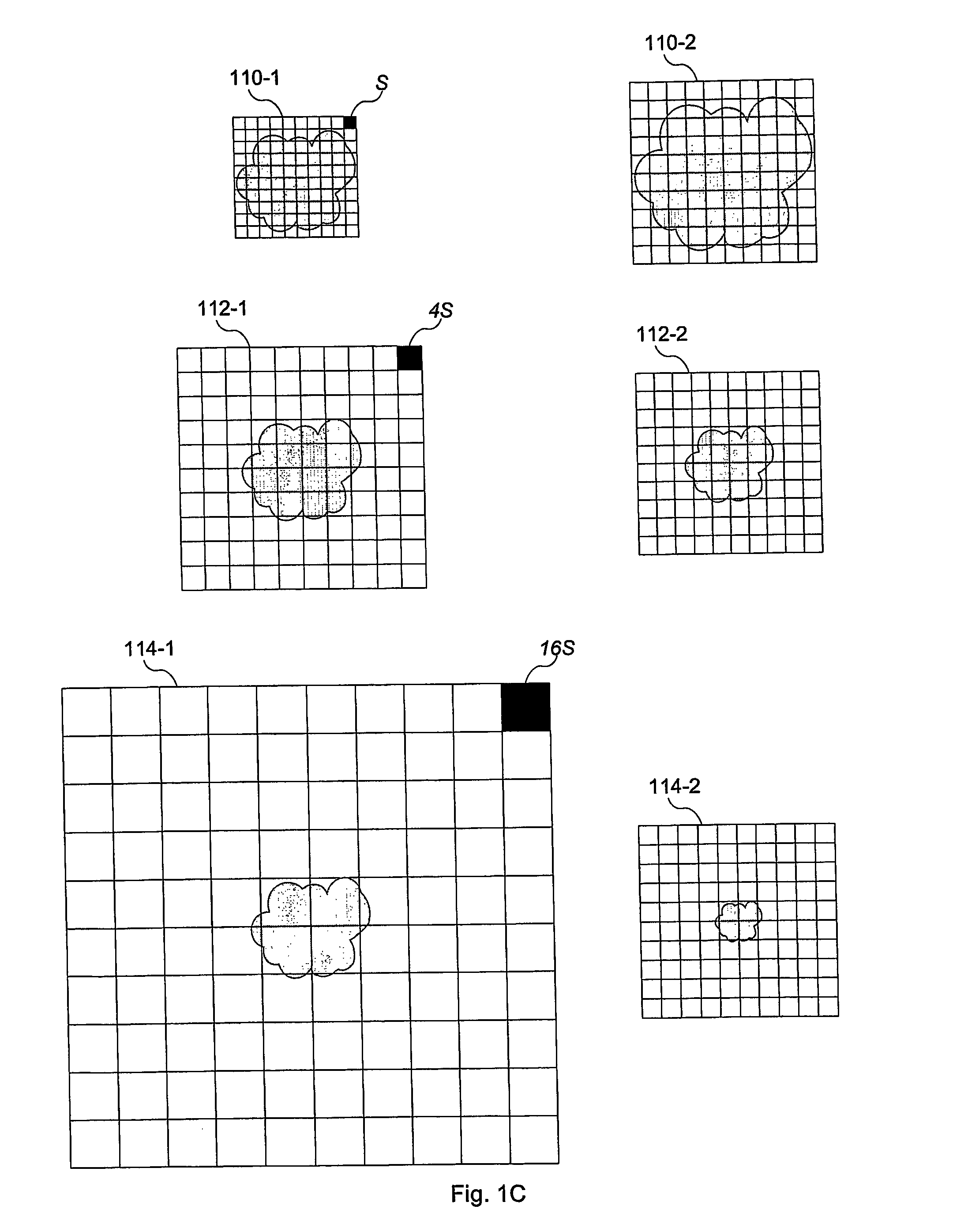Method and system for adaptive maximum intensity projection ray casting
a maximum intensity projection and projection ray technology, applied in the field of volume data rendering, can solve the problems of jitter effect, mip ray casting is a computationally expensive process, and no single image slice is able to visualize the whole surface of the hear
- Summary
- Abstract
- Description
- Claims
- Application Information
AI Technical Summary
Benefits of technology
Problems solved by technology
Method used
Image
Examples
examples
[0142]FIGS. 13A and 13B provide an example of two images generated from a 3-D CT scan dataset using adaptive MIP ray casting according to one embodiment the present invention. The two images are substantially similar except that a pixel value in FIG. 13A is only dependent upon its respective maximum data value identified along the ray path according to a predefined screen transfer function, while a pixel value in FIG. 13B is further weighted by the distance between the image plane and the location of the maximum data value in the image volume. As a result, the same maximum data values identified at different parts of the image volume may cause different pixel values on the image of FIG. 13B, offering certain 3-D perspectives to the viewer. For example, the two image sections 1320 and 1340 of the femur bone in FIG. 13A have virtually the same brightness, while the same two sections 1360 and 1380 in FIG. 13B have different brightness. In particular, since section 1360 is farther away ...
PUM
 Login to View More
Login to View More Abstract
Description
Claims
Application Information
 Login to View More
Login to View More - R&D
- Intellectual Property
- Life Sciences
- Materials
- Tech Scout
- Unparalleled Data Quality
- Higher Quality Content
- 60% Fewer Hallucinations
Browse by: Latest US Patents, China's latest patents, Technical Efficacy Thesaurus, Application Domain, Technology Topic, Popular Technical Reports.
© 2025 PatSnap. All rights reserved.Legal|Privacy policy|Modern Slavery Act Transparency Statement|Sitemap|About US| Contact US: help@patsnap.com



